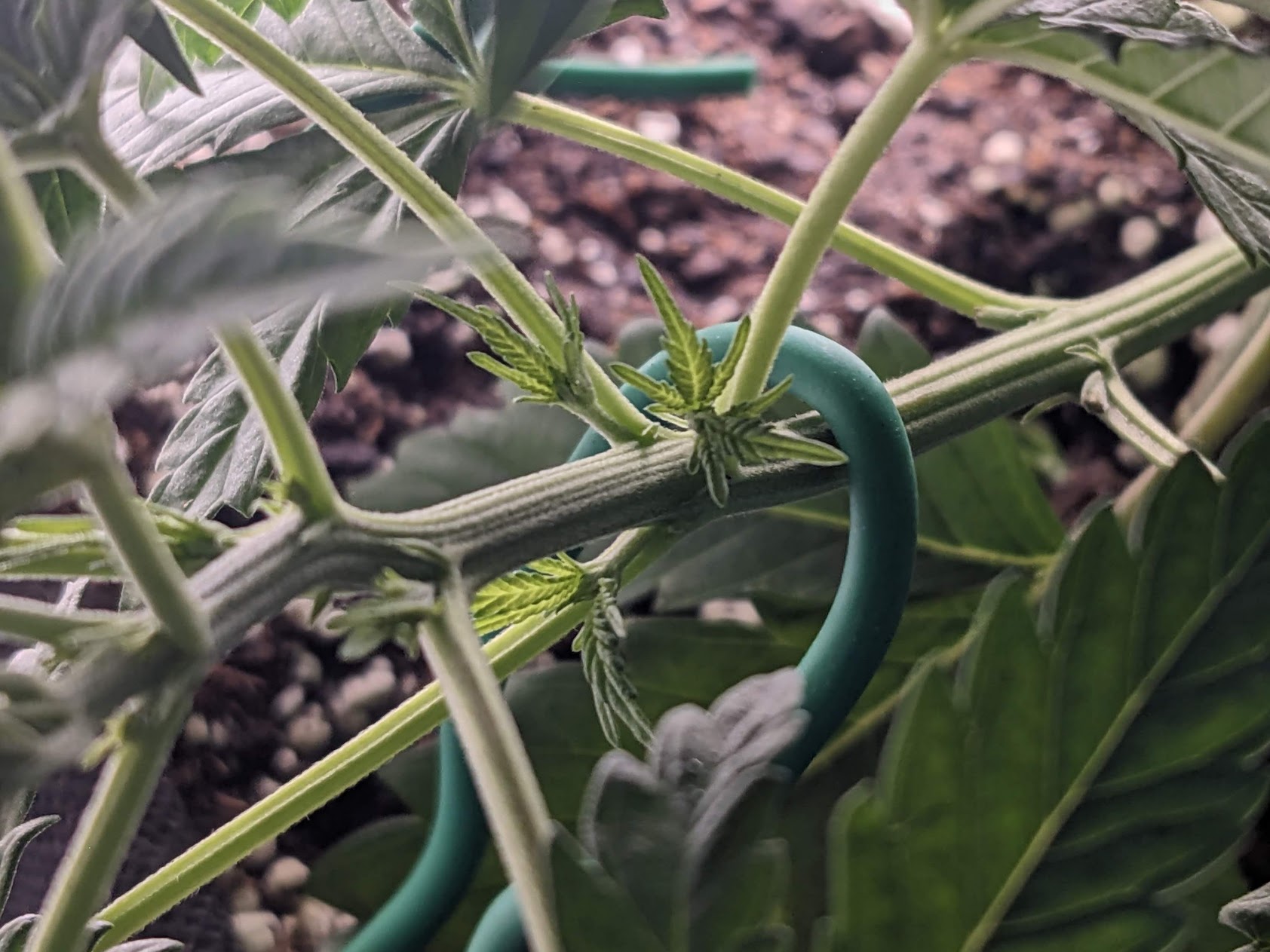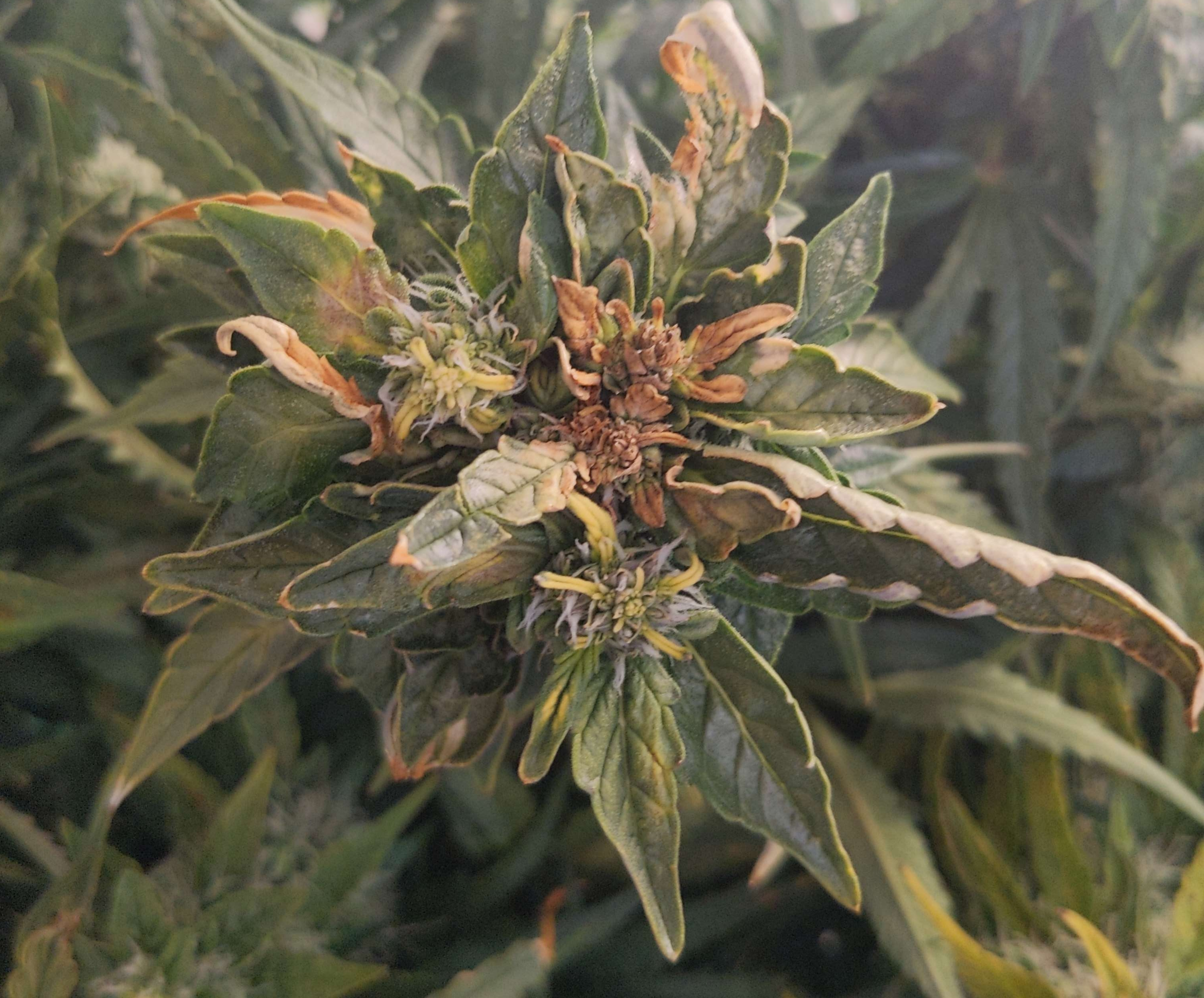Genetics
A plant's appearance, size, growth rate, and many other characteristics of strain are hard-coded into the plant through its genetics. Over time breeders, have combined desirable genetics to achieve new characteristics, such as auto-flowering. You can explore the huge variety of strains in existence on Seedfinder. While every strain has its own characteristics how strongly they are expressed differs with every seed and is also affected by the health of the plant. The qualities an individual plant displays are its phenotype.
Flowering type
Two categories are used to define how cannabis plants enter the flowering stage: Autoflowering plants that "automatically" enter the flowering stage after a period of time, and photo flower plants that enter flowering based on photoperiod (how many hours of light they receive per day). The genetic trait of automatic flowering is made possible by breeding "regular" photo-flowering strains with Cannabis Ruderalis.
Autoflower
Autoflowering plants naturally have a short life span of around 80-90 days, in this time (given good conditions) the plant will go through the cannabis life stages. Autoflowers don't rely on light schedule to flower so they can be exposed to higher DLIs. After harvesting it is not possible to re-vegetate the plant again.
Photoflower
Photoflowering plants rely on photoperiod indicators to "decide" when to enter flowering. Indoors this is usually controlled by changing the light schedule to include a dark period.
Cannabinoid content
A plant's genetics also has a huge impact on the cannabinoid content of the mature plant. Different strains have been bred to achieve a high THC content, no THC content, or even a 1:1 ratio of CBD to THC. There are many strains today that exceed 20% as a result of breeding for this characteristic.
Aroma and taste
The aroma and taste of Cannabis is created by the composition of terpenes and other aromatic volatile compound[1]. While terpenes are widely known, there is ongoing research to uncover how these compounds define the aroma profile.
The most notable terpenes used to broadly categorize cannabis are as follows:
- Myrcene
- Pinene
- Caryophyllene
- Limonene
- Terpinolene
Mutations
Environmental stress, among other factors, can cause the DNA of a cultivar to be altered causing a variation in its genetics. This can lead the morphology to differ wildly from other plants that began with the same genetics, in other words, the same strain.
Whorled Phyllotaxy

This is an alternate arrangement of branching. In Cannabis, nodes generally have two branches opposite each other on the stem they are growing from. When whorled phyllotaxy occurs 3 branches can grow from the same node.
Fasciation

Often mistaken for Polyploidy. This is the development of flat elongated stems. Colas with fasciation may have multiple buds at the top. Colas on fasciated stems will have more leaves than regular colas and reduced trichrome count.
Notable strains
Modern genetics has given us cannabis with a wide variety of leaf apperances
- Lowryder. The ruderalis strain that all auto-flowering strains descend from.
- Ducksfoot
References
- ↑ Minor, Nonterpenoid Volatile Compounds Drive the Aroma Differences of Exotic Cannabis - Oswald et al. 2023 https://www.ncbi.nlm.nih.gov/pmc/articles/PMC10601067/